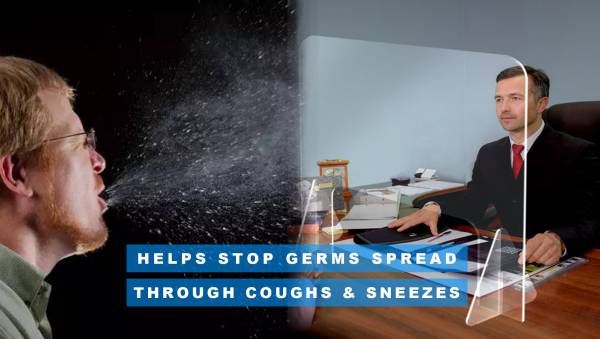Views: 3 Author: Site Editor Publish Time: 2021-06-11 Origin: Site











The widespread of COVID-19 pandemic changed life as we know it – face masks became the norm, hand sanitizer was a must, and sneeze guards popped up in almost every grocery and retail store across the country.
Today we talk about Sneeze Guards, which also called Protective Partitions, Transparent Partitions, Protective Shields, Protective Barriers, Plexiglass Shield Barrier, Splash Shields, Sneeze Shields, Sneeze Screens ect.
A sneeze guard is a protective barrier, typically made from either plexiglass or acrylic, that prevents bacteria or viruses from spreading. It works by blocking spittle or spray from a person’s nose or mouth before it can infect other areas.
Although sneeze guards are not required during the COVID-19 pandemic, they are recommended. The Centers for Disease Control and Prevention (CDC) notes that every business should “place a barrier (e.g., sneeze guard) between employees and customers.” Especially in 2020, the COVID-19 pandemic put sneeze guards in high demand. These protective shields are now popping up at cash registers, banks, and of course, doctor’s offices.
Sneeze guards are used as a barrier between shoppers and employees. They are a great way to prevent the spread of germs from one person to the other, which ultimately helps slow down a virus like COVID-19.
Sneeze guards are used for all of the following:
· Restaurants and bakeries
· Cash registers
· Reception desks
· Pharmacies & doctor’s offices
· Public transportation
· Gas stations
· Schools
· Gyms & fitness studios
Plexiglass and acrylic are both used to make sneeze guards because they’re water-resistant and durable. They are also accessible and affordable materials that are easy to install and use. Many other types of plastic are used to make sneeze guards like PVC and vinyl, but acrylic is the most common. Glass can also be used to make these shields, but it’s a lot heavier and more likely to be damaged.
You should clean your sneeze guards while wearing disposable gloves, safety goggles, and a face mask. After all, you don’t want the germs from the shield to end up on your hands or near your mouth or eyes!
This is how you should clean your sneeze guard:





If you want to go the extra mile, consider adding one more step and spraying your sneeze guard down with a sanitizer that contains at least 60% alcohol. You should then immediately get rid of your disposable gloves and throw your face mask directly into the washer or garbage can.
For good measure, wash your hands for at least 20 seconds with soap and water after you’re completely done cleaning.